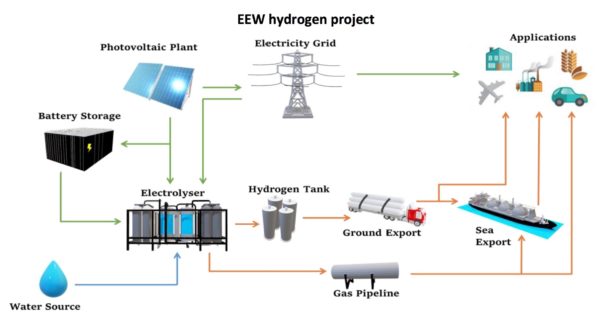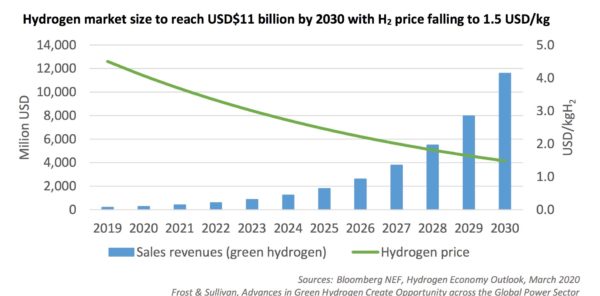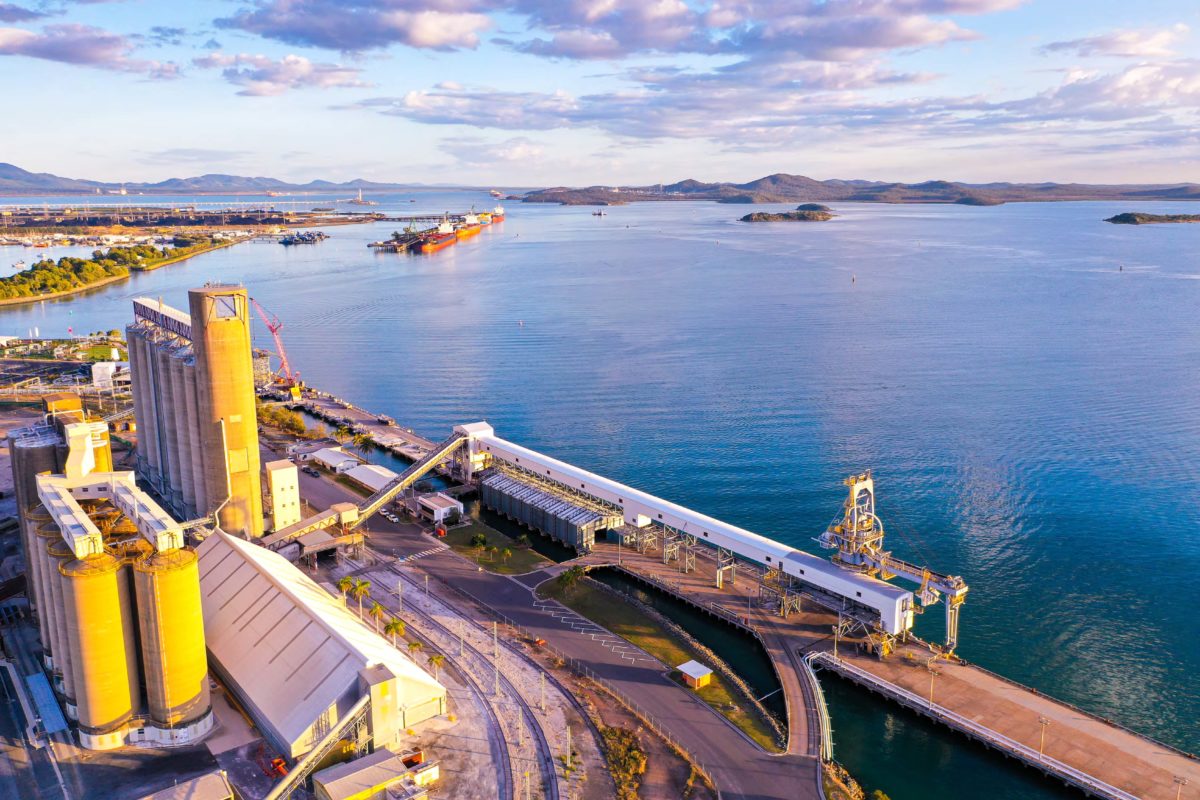London-based Eco Energy World (EEW) has announced plans for a AUD$500 million solar green hydrogen plant in Gladstone, Queensland (QLD). EEW, which is already developing a 300 MW solar project in Ragland, near the Port of Gladstone, is planning to combine the PV plant with a major green hydrogen project (project).
Gladstone, a traditional coal and gas hub, is on its way to becoming a green hydrogen mecca with several ambitious projects already in the pipeline, including Hydrogen Utility’s proposed $1.61 billion industrial complex for the large-scale production of green hydrogen and ammonia. The H2-HubTM Gladstone facility will be built in stages to integrate up to 3 GW in electrolysis plant, and up to 5,000 tonnes per day ammonia production capacity.
Throw in Japanese trading giant Sumitomo’s plans, announced last month, to build a hydrogen production plant in Gladstone too, and the regional city which is already aiming to become the first Australian city to be on a blend of natural gas and hydrogen is well on its way to becoming one of the world’s major export hubs for green hydrogen too.
The project
EEW’s plan is to combine the 300 MW solar plant, which is currently at a ready to build stage, with a 200 MW hydrogen plant with a further 100 MW energy storage facility. EEW estimates the project will be able to produce 33,000 tonnes of green hydrogen annually.

EEW’s Chairman Svante Kumlin said that the State of Queensland and Gladstone in particular “is well-positioned strategically to act as a major player in the future generation and export of hydrogen. This is due to its existing gas pipeline infrastructure, access to a deep-water export port at Gladstone and significant solar resources that make it an extremely attractive location for this emerging industry.”
QLD has not been hiding its ambition to mirror Western Australia as the major east-coast green hydrogen exporter. Indeed, QLD sent its first trial shipment of green hydrogen to Japan almost two years ago to the day, and it became the first state to establish a ministry for hydrogen when Premier Palaszczuk announced her new cabinet after re-election in November 2020.
By popular demand
With great swathes of the world’s nations committing to net-zero emissions targets over the next two to three decades, except Australia, the urgent need of large-scale replacements is becoming exceedingly obvious.
Energy hungry regions, particularly north-east Asia and Europe, lack the natural resources to generate large scale clean energy, particularly in Japan where nuclear energy has become politically, and literally, toxic. The answer, as Japan has very publicly committed to, is to transition to 100% green ammonia, and that is the demand the growing number of large-scale green hydrogen projects in Australia are looking to meet. Generate green hydrogen using solar and wind, convert it into ammonia for ease of transport, and ship it globally.

As Sacha Thacker, Chief Strategy Officer of Intercontinental Energy, the project manager and major stakeholder in the 26 GW Asian Renewable Energy Hub (AREH) in Western Australia’s Pilbara region, told pv magazine Australia, “the world needs solutions and the whole world needs them at the same time…So we are not at all worried about excess supply or lack of demand because the demand drivers are there. More and more countries are committing, Korea, Japan, China, the US has changed its stance. There is a lot of demand and not that many choices, and even fewer choices that can be produced at scale.”
This content is protected by copyright and may not be reused. If you want to cooperate with us and would like to reuse some of our content, please contact: editors@pv-magazine.com.









1 comment
By submitting this form you agree to pv magazine using your data for the purposes of publishing your comment.
Your personal data will only be disclosed or otherwise transmitted to third parties for the purposes of spam filtering or if this is necessary for technical maintenance of the website. Any other transfer to third parties will not take place unless this is justified on the basis of applicable data protection regulations or if pv magazine is legally obliged to do so.
You may revoke this consent at any time with effect for the future, in which case your personal data will be deleted immediately. Otherwise, your data will be deleted if pv magazine has processed your request or the purpose of data storage is fulfilled.
Further information on data privacy can be found in our Data Protection Policy.